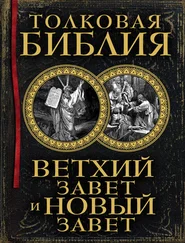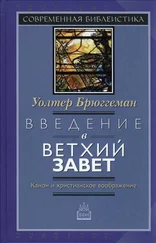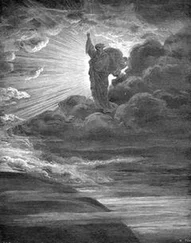Исключительную дискуссию об историко-грамматической интерпретации можно найти в John Sailhamer, “Johann August Emrsti: The Role of History in Biblical Interpretation” Journal of the Evangelical Theological Society 44 (2001), 193–206.
Ronald Allen, “Shaping Sermons by the Context of the Text” в Preaching Biblically, ed. Don Wardlow (Philadelphia: Westminster, 1983), 29–30. Немного позже вышла книга Thomas G. Long, Preaching and the Literary Forms of the Bible (Philadelphia: Fortress, 1989).
Деление Библии на главы было осуществлено относительно недавно, и то деление, которое мы имеем сегодня, обычно связывают с Кентерберийским епископом Стефаном Лэнгтоном (1150–1228).
Allen, Preaching the Topical Sermon , 2.
Don Wardlow, ed., Preaching Biblically (Philadelphia: Westminster, 1983).
Robert Scholes and Robert Kellogg, The Nature of Narrative (London: Oxford University Press, 1966), 240.
J. P. Fokkelmann, Narrative Art in Genesis: Specimens of Stylistic and Structural Analysis (Amsterdam: Van Gorcum, 1975), 9.
Sidney Greidanus, The Modern Preacher and the Ancient Text: Interpreting and Preaching Biblical Literature (Grand Rapids: Eerdmans, 1988), 199.
Shimon Bar-Efrat, “Some Observations on the Analysis of Scripture in Biblical Narrative”, Vetus Testamentum 30 (1980): 165.
Конечно же фокус здесь двойной, поскольку так же с легкостью можно было бы «Выявление мужа Божьего».
Richard G. Bowman, “Narrative Criticism: Human Purpose in Conflict with Divine Presence”, в Judges and Method: New Approaches in Biblical Studies, ed. Gale A. Yee (Minneapolis: Fortress, 1995), 29–30.
Robert Alter, The Art of Biblical Narrative (New York: Basic Books, 1981), 182.
Там же, 74–75.
Ken Matthews, “Preaching Historical Narrative,” в Reclaiming the Prophetic Mantle: Preaching the Old Testament Faithfully, ed. George L. Klein (Nashville: Broadman, 1992), 37–38.
Alter, The Art of Biblical Narrative , 95-113.
Bar-Efrat, “Some Observations,” 155.
Благодарю Кена Меттьюса (Ken Matthews) за то, что он несколько иным способом обратил внимание на этот пример в своей книге “Preaching Historical Narrative,” 38–39.
Meir Sternberg, The Poetics of Biblical Narrative (Bloomington, Ind.: Indiana University Press, 1985), 186.
Cm.John W. Welch, “Introduction,” в Chiasmus in Antiquity, ed. John W. Welch (Hildesheim: Gerstenberg, 1981), 11.
Dale Ralph Davis, Looking on the Heart: Expositions of the Book of 1 Samuel (Grand Rapids: Baker, 1994), 1:47–48.
Fred В. Craddock, As One Without Authority (Nashville: Abingdon, 1971), 25–26.
John C. Hoibert, Preaching Old Testament: Proclamation & Narrative in the Hebrew Bible (Nashville: Abingdon, 1991), 37–38.
Предполагается, что это определение восходит к Сервантесу. Оно цитируется в James Creshaw, Old Testament Wisdom: An Introduction (Atlanta: John Knox, 1981), 67.
Brevard Childs, Old Testament in a Canonical Context (Philadelphia: Fortress, 1985), 211-12, о которой мне напомнил Дуэйн Гарретт (Duane Garrett) в “Preaching Wisdom” в Reclaiming the Prophetic Mantle: Preaching the Old Testament Faithfully, ed. George L. Klein (Nashville: Broadman, 1992), 109.
Walter С. Kaiser Jr., Toward Rediscovering the Old Testament (Grand Rapids: Zondervan, 1987), 178-79. См. также John Bright, The Authority of the Old Testament, 2d ed. (Grand Rapids: Baker, 1975), 136.
Я признателен за большую часть материала, который содержится здесь, хоть и в переработанном виде, Alyce М. McKenzie, Preaching Proverbs: Wisdom for the Pulpit (Louisville, Kent.: Westminster/John Knox, 1996), 4–6.
McKenzie, Preaching Proverbs , 6.
Метафора - это подразумеваемое или не выраженное явно сравнение двух различных предметов. (Формула: А - это Б, без использования слов «подобно» или «как»).
Риторическая фигура, замена или замещение одного слова (предмета или явления) другим с целью усиления впечатления, которое не может быть достигнуто иным путём.
Duane Garrett, “Preaching Wisdom,” 116-17, и в его же, The New American Commentary: Proverbs , Ecclesiastes, Song erf Songs, ed. E. Ray Clendenen (Nashville: Broadman, 1993) ,123-28.
Garrett, The New American Commentary, 172, сноска 363.
Более подробно см. Walter С. Kaiser Jr., Ecclesiastes: Total Life (Chicago: Moody, 1979).
В еврейском тексте здесь использовано сокращенное имя Бога «Я(х)». Некоторые английские переводы преподносят Божье имя как усилительное прилагательное или как наречие, но это не имеет надежного грамматического основания.
Дальнейшее рассмотрение этого отрывка можно найти в Walter С. Kaiser Jr., “True Marital Love in Proverbs 5:15-23 and the Interpretation of Song of Songs” в The Way of Wisdom: Essays in Honor of Bruce K. Waltke, ed. J.I. Packer and Sven K. Soderlund (Grand Rapids: Zondervan, 2000), 106-16.
См. Gary V. Smith, Prophets as Preachers : An Introduction to the Hebrew Prophets (Nashville: Broadman and Holman, 1994), который анализирует пророков с точки зрения, которая показывает, как они пытались изменить реакцию людей, и использует для этого современную теорию о человеческом мышлении.
Читать дальше
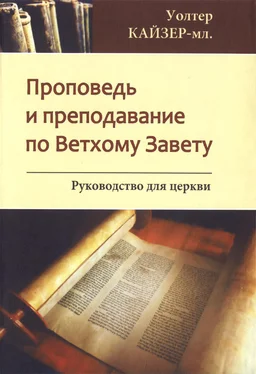
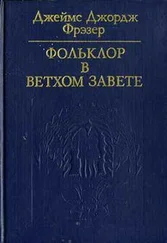

![Ветхий Завет - [Вторая книга Маккавейская]](/books/20924/vethij-zavet-vtoraya-kniga-makkavejskaya-thumb.webp)
![Ветхий Завет - [Книга Иудифи]](/books/20931/vethij-zavet-kniga-iudifi-thumb.webp)
